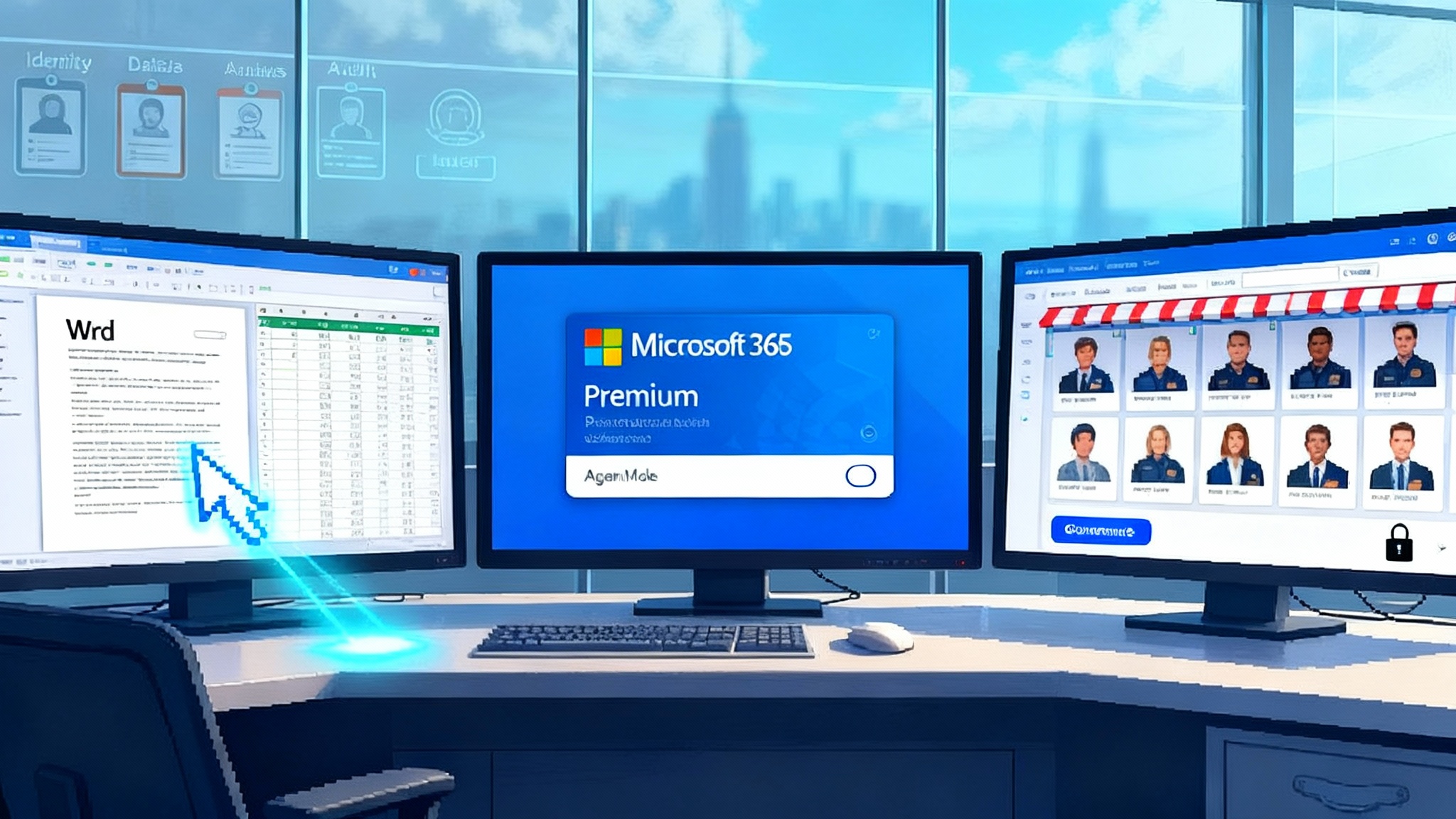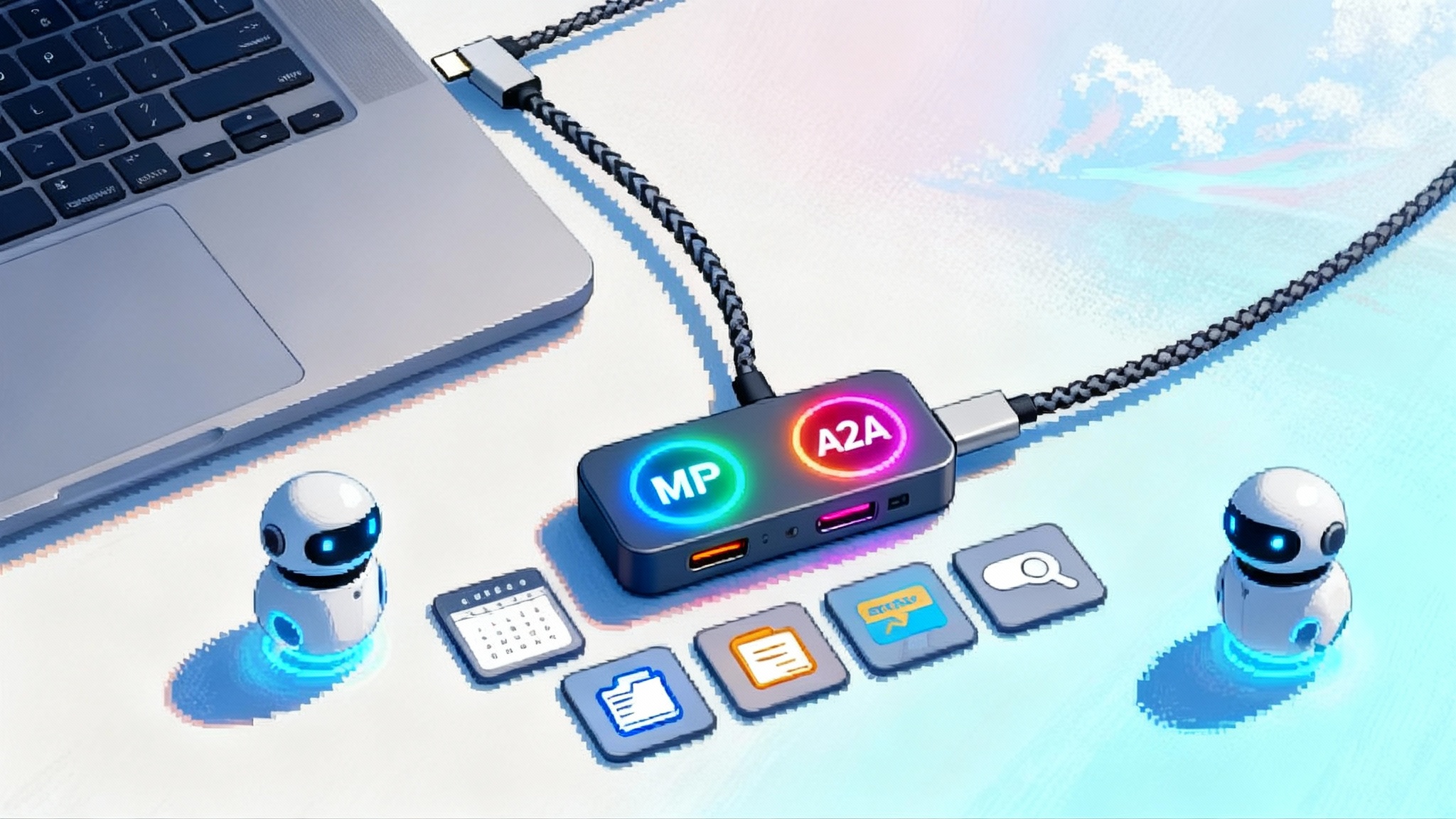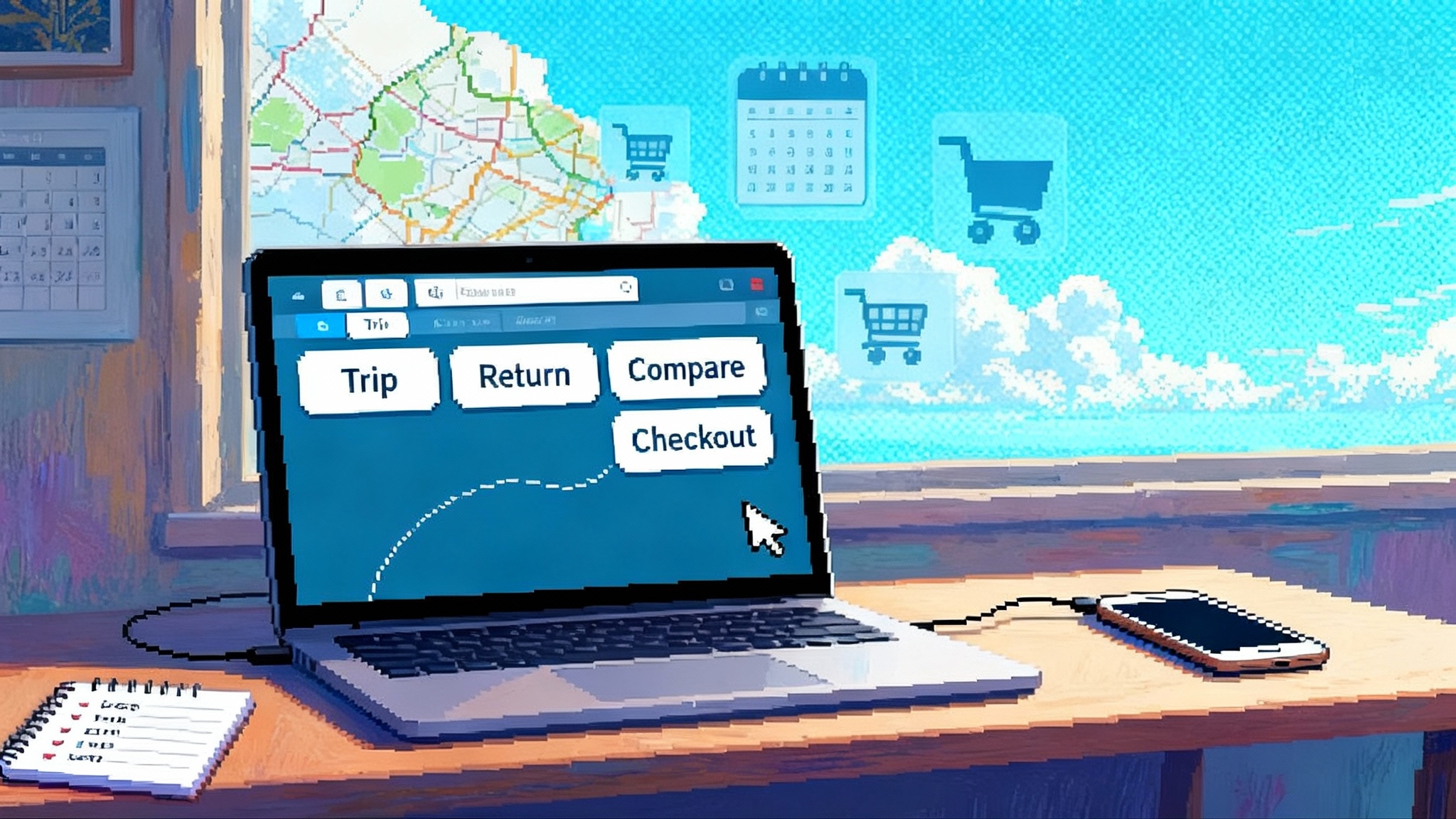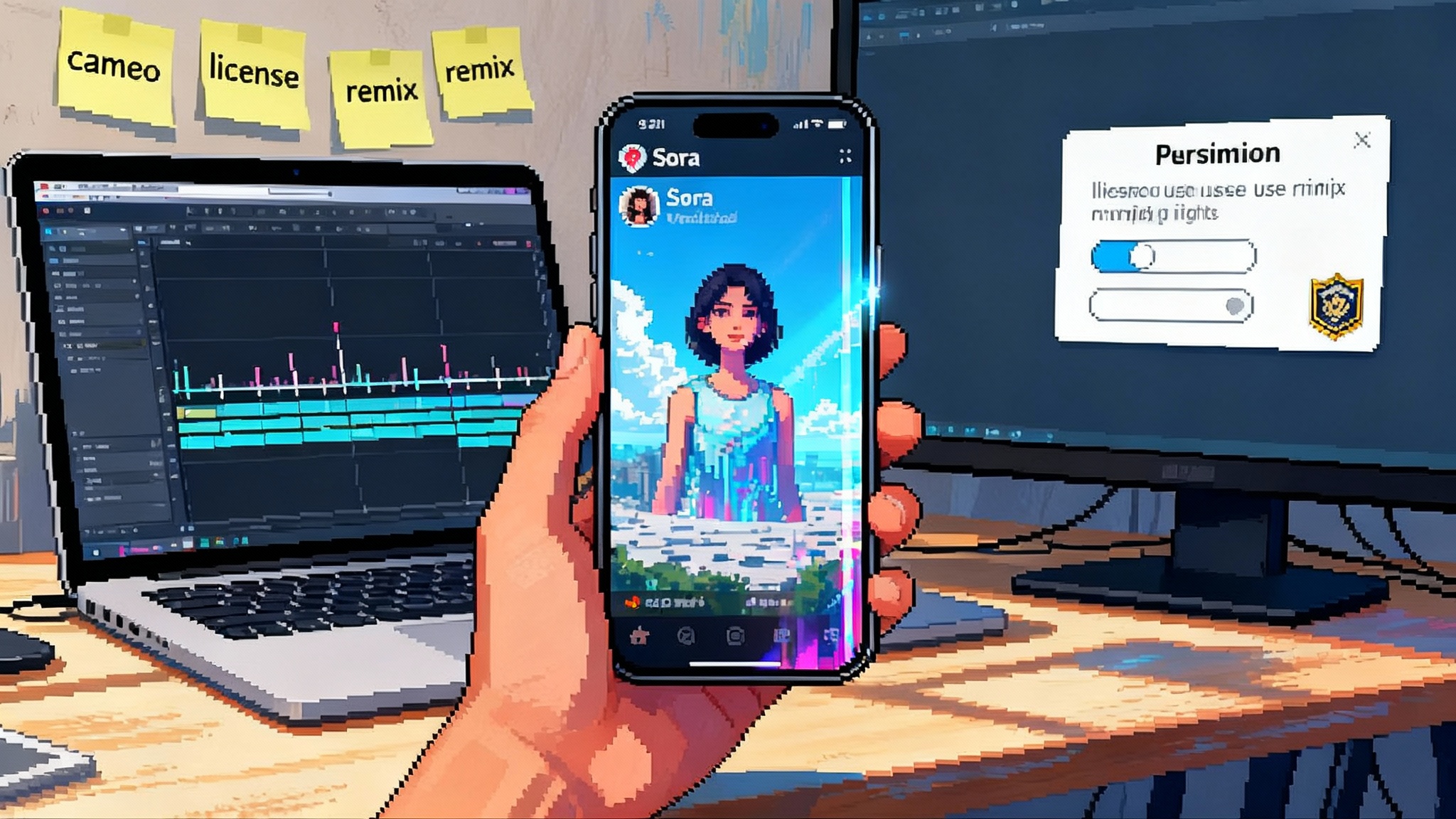Sora’s Rights Rails and the App Store Era of AI Video
OpenAI Sora is moving from experiment to platform. New rightsholder controls, revenue sharing, and fast in-app blocking signal an App Store style model for licensed character agents, virtual actors, and creator marketplaces.
The week synthetic media got rights rails
This week did not just bring a policy update. It brought the beginnings of a business model. OpenAI said it will give rights holders new controls over how their characters appear inside Sora, pilot revenue sharing for participation, and roll out rapid in‑app blocking for unlicensed character use. In one move, Sora shifted from a free‑for‑all generator to something that looks like a platform with permissions. Think less wild upload site, more iTunes for moving pictures. OpenAI framed it as rightsholder controls and revenue sharing, and the timing matters: Sora usage has been growing fast, and studios needed a simple way to say yes, say no, or get paid.
The idea of rights rails is simple. Give owners toggles, give creators clarity, and give the platform enforcement tools that act in minutes, not months. It changes who feels safe to participate and what kinds of stories can be told without a lawyer on speed dial. With those rails in place, an entirely new market can form on top.
From Napster energy to iTunes economics
The last year of text‑to‑video felt like the early file sharing era. Dazzling, chaotic, hard to monetize cleanly. The music industry only stabilized when Apple converted chaos into catalog. It did three things well: it set clear prices, it authenticated files, and it made legal music one tap easier than piracy. Sora’s new rules hint at the same formula for synthetic video. Price is handled by revenue shares and commercial licensing. Authentication is handled by provenance signals. Ease comes from a consumer app where the default behavior is lawful participation. See how the store model is arriving in enterprise with Microsoft's agent and security store.
The analogy is not perfect. Video is not a song file, and characters are not tracks. But the logic holds. If the best, easiest way to make an on‑brand clip is to use a licensed character agent inside Sora, then a whole ecosystem of legal creativity opens up. When characters can be used safely, studios can greenlight experiments, brands can brief campaigns, and creators can co‑create without guessing where the lines are.
Why these rights rails matter now
- Safety and trust: Parents, brands, and regulators want guarantees. If a character can only act within a rights holder’s rules, then a mishap becomes a misconfiguration, not a scandal.
- Business clarity: A known revenue split lets accountants plan. It also lets creators compare paths. Do they work with licensed characters for a split or lean on original IP for full upside?
- Discovery and distribution: Platforms reward what they can trust. Rule‑compliant clips are easy to recommend, promote, and sponsor.
- Litigation pressure: When the platform can block unlicensed use and record consent, dispute volume goes down and settlements get cheaper.
Licensed character agents are the unlock
Picture a studio turning its most valuable characters into digital actors that follow a character bible to the letter. A character agent is a licensed, brand‑safe persona that can be directed in Sora. It can speak in the right cadence, move with the right energy, and avoid the things that would never make it past a studio notes meeting. You can call the character into a scene, but you cannot make it break the house rules.
With agents like this, the messy questions of tone, safety, and suitability become configuration rather than guesswork. Studios can push updates to the agent’s rules the same way game studios patch a live title. Brands get consistency across thousands of creator videos. Creators get the thrill of directing an icon without risking a takedown.
Virtual actors that scale across shoots
A virtual actor is more than a filter. It is a performance instrument. A director can specify intention, blocking, props, and dialogue in text. The agent maps that direction to an on‑brand performance. The economic leap is that the actor can appear in a thousand videos at once. That means the old bottleneck of scheduling and travel turns into a licensing decision. The guardrails define what the actor will never do. The studio defines what it wants the actor to do more often. The platform enforces both.
Consider ads. A snack brand wants to appear in playful kitchen scenes, never near unsafe behavior. A virtual actor with kitchen‑safe constraints can hit that brief every time. Consider global markets. The agent can auto‑localize gestures and dialogue inside the same safety fence. Consider long‑tail creators. A mid‑tier channel can pitch an official character cameo for a fraction of a live appearance, with rules and revenue handled in‑app.
Character stores, not just model menus
Once characters are permissioned, a storefront becomes inevitable. A character store is a marketplace where studios list official agents, update rules, and set usage tiers. Think free preview for non‑commercial memes, paid tier for monetized channels, and higher tier for brand collabs. The store can bundle voice, music stings, and signature motions. It can also cross‑promote upcoming releases and events. Fans get a clear signal: if it has the checkmark, it is official. Creators get a clean path to participate. Studios get telemetry and a direct relationship with the long tail.
New creator economics and the co‑creation graph
A creator that uses a character agent is not just borrowing fame. They are joining a networked production. Every use can be tracked. Every clip can participate in a revenue graph. The simplest version pays out a percentage of ad revenue or a fixed per‑use fee. A more advanced version pays differently based on scene complexity, brand safety ratings, and audience cohort. The point is not to make payments complicated. The point is to reward high‑quality, on‑brand work at scale.
Imagine a children’s channel that produces bedtime mini‑stories. The channel licenses a beloved character agent under a family‑safe tier. Each episode that meets the studio’s guidelines gets extra boost in the Sora feed. Revenue shares accrue automatically, and the studio can invite the creator to special prompts that tie into a new film release. That creator’s business starts to look like a small licensed merchandise line, but for stories.
The guts of the rails: consent, provenance, enforcement
Two technical ingredients make a permissioned video platform work at scale. First, provenance. Sora now embeds visible watermarks and cryptographic metadata so that any video generated on the platform can be identified and traced. OpenAI has said that all Sora outputs carry watermarks and C2PA metadata, and that gives rights holders and distributors a shared signal to verify origin. Second, consent. Sora’s likeness features are moving toward consent‑based participation for people, and under the new controls, characters and other fictional IP can be treated similarly. In practice that means a policy layer and a model‑side detector that spots named characters, signature attributes, and distinctive styles, then checks whether the requested use is allowed.
Here is a simplified flow for a protected character:
- The prompt or storyboard references a character. The model’s classifier flags it as protected.
- The platform checks the character’s policy. If usage is disallowed for the creator’s account type, it blocks generation before the first frame.
- If usage is allowed with limits, the generator applies the character’s house rules. That includes tone filters, costume controls, voice constraints, and scene exclusions.
- The resulting video is stamped with provenance data. If it circulates outside the app, a distributor can see it is an official co‑created clip, not a deepfake.
When a character is unlicensed, the block should be near‑instant and the appeal path clear. When a character is licensed, the system should guide creators toward success rather than sitting in judgment. That is how a platform earns trust from both sides.
The near‑term playbook
For studios and rights holders
- Register canonical references: Provide the platform with the definitive character bible, gesture library, voice prints, and negative lists. The model needs ground truth to spot misuse and to perform well when allowed.
- Define usage tiers: Separate fan play from commercial work. Offer a free or low‑cost tier for non‑monetized use, and clear paid tiers for creators, agencies, and brands.
- Ship day‑one agent bundles: Launch official agents with ready‑to‑use prompts, scene packs, and safe defaults that reflect your brand. Lower friction equals more compliant usage.
- Instrument the rules: Encode tone, wardrobe, pose, and setting constraints. Codify what is out of bounds in a testable way so enforcement is predictable.
- Plan the revenue graph: Start with a simple split and performance bonuses. Publish the basics so creators understand the upside and can plan content calendars.
- Stand up a fast appeals desk: Mistakes will happen. Offer a 24 to 48 hour appeal turnaround with human escalation for major partners.
- Protect your classics: Prioritize your most valuable or vulnerable characters for the strictest settings. De‑risk first, then open gradually.
For creators
- Learn the agent: Study the official prompt guides and house rules. Treat it like learning a camera menu or a visual style guide.
- Build a clean pipeline: Keep a published checklist for brand safety, disclosure, provenance, and music rights. Consistency reduces takedowns and boosts distribution.
- Start with short formats: Prove that you can deliver three strong 10 to 20 second clips per week inside the rules. Consistency wins deals.
- Pitch seasonal arcs: Offer studios mini‑series ideas that tie into release calendars and cultural moments. Licensed characters love momentum.
- Track your metrics tightly: Monitor watch time and brand safety scores. Use them in your pitches to unlock higher‑value tiers.
- Diversify with originals: Use licensed agents to grow, but develop your own characters in parallel. Protect your long‑term leverage.
For startups building on permissioned AI video
- Rights operations tools: Build dashboards that help studios define policies, simulate edge cases, and publish updates to platforms.
- Compliance middleware: Offer pre‑flight checks that score prompts and storyboards for brand safety, legal risk, and cultural sensitivity before generation. Borrow patterns from the agentic compliance playbook.
- Character marketplaces: Create white‑label stores and payment rails for studios that want branded storefronts with their own pricing and analytics.
- Fingerprinting and recall: Improve matching for stylized characters and long‑tail properties. Better recall means fewer false positives and cleaner monetization.
- Creator analytics: Provide cohort analysis and creative feedback loops. Help creators learn which directions produce brand‑safe, high‑performing clips.
- Finance and payout: Specialize in micro‑royalty accounting for hundreds of thousands of small transactions. Transparency is a feature.
The risks and how to manage them
Gatekeeping risk: A rights‑centric platform can tilt toward the largest catalog owners. That is a solvable design choice. Cap exclusivity windows, publish clear inclusion criteria for the store, and create a competitive path for original characters to rise into featured placement.
Overblocking and false positives: Style and character detection is hard. Platforms should publish model cards for policy detectors, invest in regular third‑party audits, and provide fast human review for creators with strong track records.
Unclear rev shares: If payouts are fuzzy, creators will disengage. Platforms and studios should publish baseline splits, settlement timelines, and dispute processes. Clarity is not just legal hygiene, it is a growth engine.
Cross‑platform fragmentation: If each platform has a separate rights format, creators will drown in settings. Lean into open standards for provenance and policy packaging, and follow the momentum toward interop described in the USB‑C moment for agents.
What to watch next
- First big studio slate: The signal that this market is real will be a major studio listing multiple characters with clear tiers and seasonal plans inside Sora.
- The first ten thousand creators: When mid‑tier creators earn predictable money using licensed agents, the flywheel starts to spin.
- Interop experiments: Watch for portability between Sora, editing suites, and distribution platforms using shared provenance tags and policy manifests.
- Creator‑led originals: Expect a breakout character that begins as a creator original, then receives formal licensing from a studio for crossovers.
- Policy clarity on likeness: Consent‑based likeness features for people should harden quickly. Expect more explicit opt‑in flows and stronger tooling around cameos and revocation.
The bottom line
Synthetic video is moving from experiments to contracts. Rights rails turn spontaneity into a market by making permission the default and participation the norm. This is how new forms of entertainment get built safely, and how they pay the people who make them possible. The winners will be the teams that learn the rules early, write them into their creative tools, and ship stories that people actually want to watch. The rails are not the end of creativity. They are the track that lets the next wave of creators and characters move at full speed without flying off the curve.








